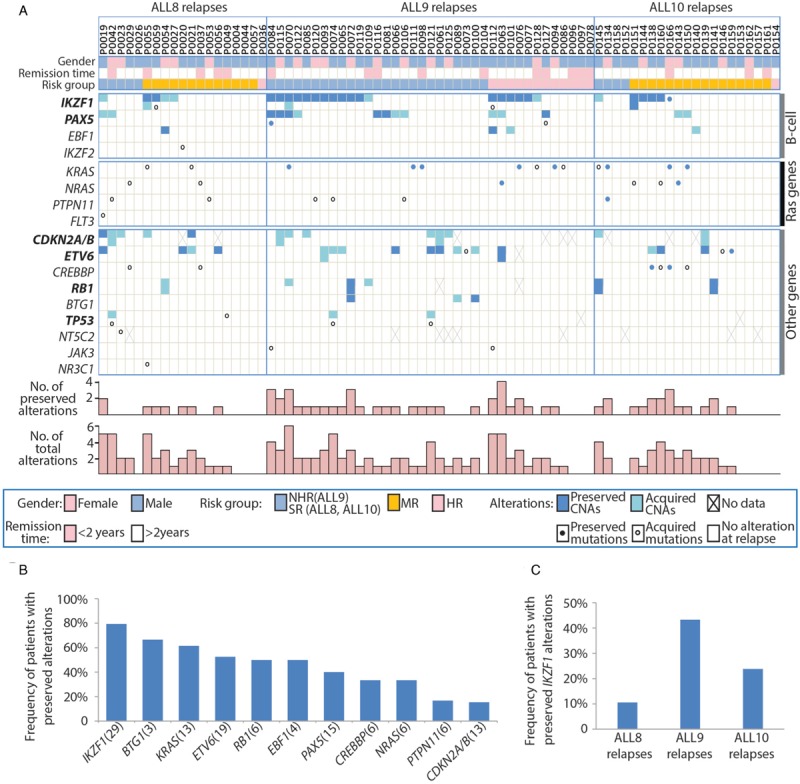Figure 3.

Origin of genetic alterations in relapsed BCP-ALL. (A) Relapse-associated alterations in each patient and their status (preserved or acquired). Patients are displayed in columns sorted by upfront treatment protocols. Genes are shown in rows grouped by their corresponding pathways. For genes indicated in bold, double rows represent homozygous or compound heterozygous alterations. Preserved alterations are shown in dark grey (CNA) or solid dots (mutation), while acquired alterations are depicted in light grey (CNA) or open circles (mutation). Numbers of preserved alterations and total numbers of alterations identified at relapse in each patient are shown at the bottom. Five genes not indicated in this figure (IKZF3, BRAF, FLT3, JAK1, JAK2) were wildtype in all tested samples. Details of all alterations are presented in Table, S10. (B) Frequency of patients that carried preserved alterations in 11 genes studied. The number of patients studied for each gene is displayed in brackets. (C) Frequency of patient with preserved IKZF1 alterations in patients treated with different upfront protocols.
